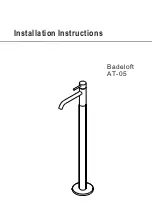
MERLIN LEGEND Communications System Release 5.0
Feature Reference
555-650-110
Issue 1
June 1997
Applications
Page I-14
MERLIN MAIL and MERLIN LEGEND MAIL
I
Considerations and Constraints
9
The MERLIN MAIL and MERLIN LEGEND MAIL VMSs are available in 2-port,
4-port, and 6-port configurations. The 2-port and 4-port configurations have 6
hours of message storage capacity, and the 6-port configuration has 10 hours of
message storage capacity.
The size of a subscriber’s mailbox—that is, the total amount of storage for all the
messages it can hold—is variable. Available options are 5, 10, or 15 minutes; 5-,
10-, or 60-minute
total
storage is available for mailboxes.
Callers with rotary telephones whose calls are answered by the Automated
Attendant Touch-Tone Gate cannot use the features of the MERLIN MAIL or
MERLIN LEGEND MAIL VMS. The application should be set up to direct these
calls to the system operator during business hours.
Each Automated Attendant answers calls immediately (immediate call handling)
or after a delay (delayed call handling).
You program the VMS with a touch-tone telephone. To support remote
diagnostics, the MERLIN MAIL VMS is equipped with an RS-232 serial port and
an external remote maintenance device (modem). The MERLIN LEGEND MAIL
VMS is equipped with a 9-pin RS-232 serial port and a 1,200-baud internal remote
maintenance device.
You should assign Disallowed Lists to the VMI ports that connect to MERLIN
MAIL or to MERLIN LEGEND MAIL voice messaging systems. Restrict or
toll-restrict the VMI ports and then assign Allowed Lists as necessary. This
prevents toll calls from being dialed through the VMS and permits the application
to call out only to the area codes or numbers you specify. If Automatic Route
Selection is being used, apply the appropriate Facility Restriction Levels. See
MERLIN MAIL Voice Messaging System Release 3 Planning, Installation, and
Use
for more details.
You cannot use MERLIN MAIL or MERLIN LEGEND MAIL VMS with Lucent
Technologies Attendant.
Feature Interactions
9
Coverage
Use system programming to assign all extensions that need coverage to
a coverage group. The system does not do this automatically. It assigns
the VMS ports to a calling group and designates the VMS as the
coverage receiver for the coverage group.
Subscribers can program their telephones so that only outside calls are
sent to coverage.
















































